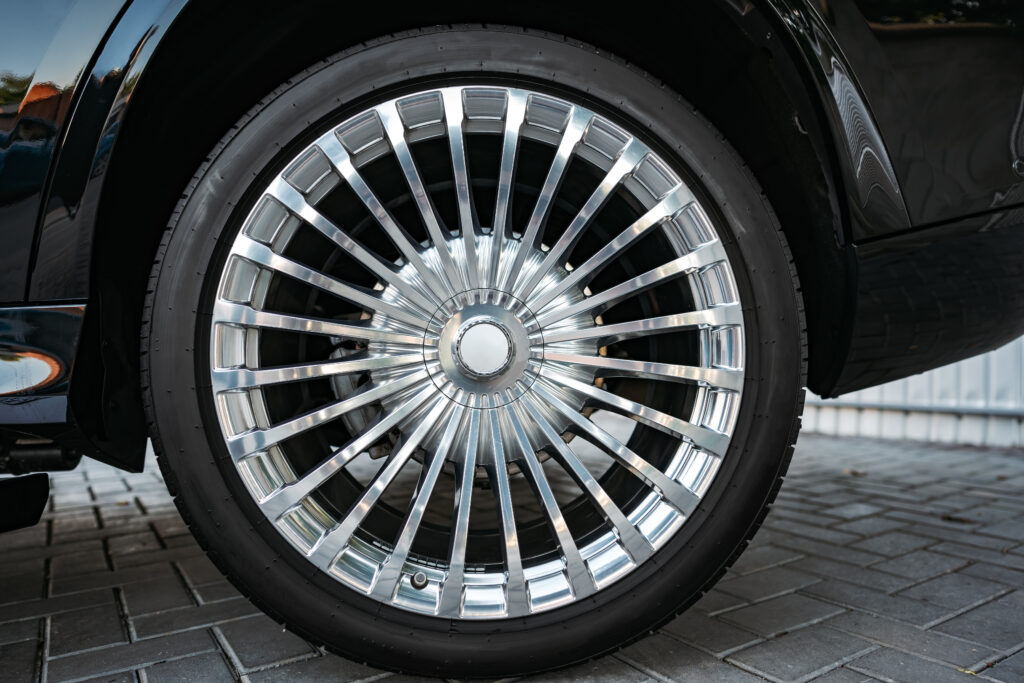
If you drive a car, you’ll be familiar with the feelings of frustration that come with a flat tyre. And it’s not just a hassle to change a tyre – it can also be expensive to replace one.
Unfortunately, more than 41,500 tyre-related incidents took place on national highways in the UK during 2022, leaving cars with noticeable tyre and alloy damage, some of the most common of which being punctures, cuts, impacts, cracks, bulges and irregular wear, and they’re often caused by poorly maintained roads.
Since this type of damage is so common, in the absence of a revolutionary road improvement scheme, it’s wise to get tyre insurance to help cover the cost if your tyres go flat.
Here, we’ll look at all the myths surrounding tyre insurance and help you understand when you do and don’t need to invest in a policy.
Jump straight to a specific section or read on for the full piece.
- What is tyre insurance
- Myth: I don’t need tyre insurance because I have breakdown cover
- Fact: Tyre damage isn’t usually avoidable
- Myth: My tyres look fine so I don’t need insurance
- Fact: An annual MOT is not enough
- Myth: Tyre insurance is a rip-off
- Fact: Tyres don’t last forever
- Get tyre and alloy insurance
What is tyre insurance?
In its most basic form, a Tyre and Alloy insurance policy ensures that if your tyres or alloys are damaged (either accidentally or maliciously), you don’t have to fork out to replace them.
Policies vary according to how much you can claim and how many claims you can make each year, but a lot of them cover you for both puncture repair and replacement tyres and allow between two and three claims per year.

Myth: I don’t need tyre insurance because I have breakdown cover
Unfortunately, this is a widely believed myth, leaving many people without cover as breakdown insurance rarely covers the full cost of damaged tyres.
Breakdown insurance will usually cover you on the day your tyre goes flat to make sure you get home safely, but it won’t cover repairs or replacement if your tyre is damaged. So, without tyre insurance, you’ll have to pay without any assistance, which can cost up to £700 per wheel, depending on the type of tyre you require (Checkatrade, 2022).
And if you’re wondering if your standard motor insurance covers tyre damage, it depends on the type of policy you’ve taken out. While some policies cover various forms of tyre damage, you may find that due to the excess on your policy, making a claim isn’t worth it because the excess fee is actually higher than the repair fee.
When you take out a dedicated tyre insurance policy, your excess fee will be drastically reduced (or even non-existent with the right policy), so you can claim when you need to without worry.
Fact: Tyre damage isn’t usually avoidable
Unfortunately, no matter where you live, you can’t avoid poor-quality roads 100% of the time. And anything from cracks, potholes and raised kerbs to scattered debris on the roads can cause considerable damage to your car.
Since there’s usually no way around this problem and you’d have to have the most eagle of eyes and speedy reactions to spot these types of hazards, in most circumstances, tyre damage is unavoidable.
Also see: Alloy and tyre insurance cover: What you need to know
Myth: My tyres look fine, so I don’t need insurance
Sometimes to the untrained eye, tyres with low inflation and tread depth can look normal. But that doesn’t necessarily mean they are. And, if they’re not within the legal limits, your car will have a reduced grip on the road and be more prone to damage. Your insurance will also become invalid if you are driving with tyres below the legal tread depth limit.
Balding tyres are particularly dangerous, for example, if you’re trying to carry out an emergency stop, tyres with a low tread depth will travel considerably further than newer tyres, leaving you more susceptible to a crash.
If you want to check your tread depth and don’t have a tread gauge to hand, you can use a 20 pence piece. Simply slot the coin into the tyre tread, and if the thick border of the coin is hidden, your tyres are fine. If you can still see the border of the coin, your tyres are lacking tread depth.
Alternatively, ask a garage to check for you. Garages rarely charge for this, so pull in when they’re not busy and ask them to cast their eye over your tyres.

Fact: An annual MOT is not enough
While a mechanic will inspect your tyres as part of your annual MOT, it’s still a good idea to check your tyre pressure regularly as they naturally lose some air over time.
If your tyre pressure is too low or high, it can be hazardous. To err on the side of caution, we suggest checking your tyre pressure every few weeks or so – and even more often in colder months. One way to do this is by walking around the car and observing whether any tyres are lower than the rest.
You can also check your tyre pressure by using a pressure gauge and comparing your findings to what your car manual stipulates. You’ll find these gauges in the forecourt of many petrol stations, and they’re often free to use.
It’s also worth noting that correctly inflated tyres can improve your mileage per tank by up to three per cent, so ensuring your tyres are fit for purpose will help you save money on fuel.
Myth: Tyre insurance is a rip-off
Whatever car you drive, repairing tyre damage will be expensive: standard tyres can cost £45-120 to replace, while high-end tyres can cost anything up to £700 (Checkatrade, 2022). So, is tyre insurance worth it? In short, yes.
The cost of insurance can vary according to the type of car you drive, your tyre size and make, and the length of cover you require, but it can be as cheap as £11 per month (Save More Money, 2023) and save you hundreds in the long run.
Also see: How to remove hairline scratches from your car
Fact: Tyres don’t last forever
It’s impossible to know how long your tyres are going to last. Some types last longer than others, but it all depends on the type of car you drive, the distances you travel and the sort of driving you do – climate can even make a difference. And contrary to what you might think, high-performance tyres tend to wear faster because they have softer compounds for added grip.
Legally, you must replace your tyres as soon as the tread depth reaches 1.6mm, but even if the tread doesn’t get worn down, the rubber naturally perishes over time. So, as a general rule, it’s a good idea to change your tyres every 20,000 miles or every five years – whichever comes first.
If you’re caught driving a car with a tyre with less than 1.6mm tread, you can be fined £2,500 and get three points on your licence (National Tyres and Autocare, 2022). That’s £10,000 and 12 points if all four tyres are found in a poor state.
Oh, and a six-month driving ban.
Get tyre and alloy insurance today
Your tyres are the only parts of your car that make contact with the road, so they need to remain in good condition to help keep you safe.
Find out more about tyre and alloy insurance or protect yourself and your passengers and get a quote today.


